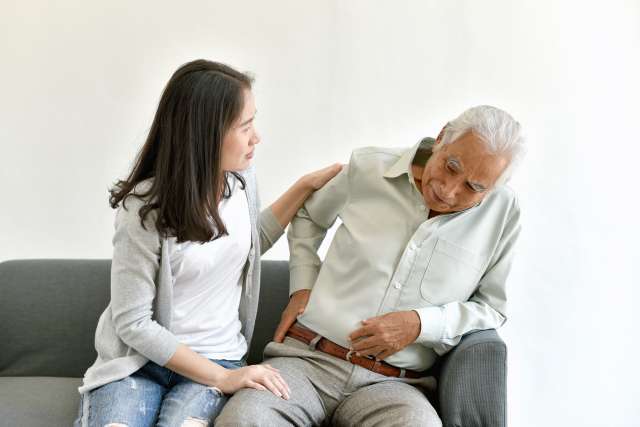Dear Doctors: My mom is 61. She started having hip pain and figured it meant a hip replacement surgery at some point in the future. When she saw her doctor, the tests showed osteonecrosis, and the surgery had to happen right away. What causes osteonecrosis, and what happens if you don't treat it?
Dear Reader: Osteonecrosis is a degenerative condition in which bone tissue begins to die. Also known as avascular necrosis, it happens because of reduced or fully interrupted blood supply to the bone. We can glean clues about the condition from its name. “Osteo” means bone and “necrosis” means death, both from ancient Greek. The suffix “osis” indicates an abnormal condition. And the word “avascular,” which derives from Latin, refers to a loss of blood vessels. So, bone death due to a lack of blood flow.
To understand osteonecrosis, we should begin with how healthy bone normally functions. Bones may appear solid and unchanging, but they are made of living tissue. Bone tissue is constantly being removed and replaced in a complex balancing act known as remodeling. The various cells involved need a steady blood supply to deliver oxygen and nutrients and to carry away waste. When something interrupts the blood flow, the cells involved in remodeling can no longer do their work. This leads to tissue death and, over time, the collapse of the bone.
Almost any bone in the body is vulnerable to osteonecrosis. Due to how blood supplies route, certain bones are at increased risk. This includes the femur, the long thigh bone. The top of the bone that fits into the hip socket is known as the femoral head. It has a delicate network of tiny arteries and capillaries that branch off from the femoral artery. A break, a dislocation or even a small injury can impede the flow of blood to the bone. Additional causes of the condition include blockage from fat particles, prolonged corticosteroid use or damage from heavy drinking. Any of these can starve the bone tissue of oxygen and put it at risk of dying.
The pain your mother experienced is the primary symptom of osteonecrosis. As the condition progresses, damage within the bone begins to limit the person's range of motion. If left untreated, the area of necrosis expands and the tiny channels that deliver blood and nutrients to the bone cells begin to collapse. The outer surface of the femoral head also weakens. This can begin to erode the smooth cartilage that lines the socket of the hip joint. This is where the femoral head sits and can lead to arthritis.
Early treatment for the condition focuses on restoring blood flow and preserving the joint. If the femoral head has collapsed or arthritis has developed, total hip replacement is often the most effective solution. In most cases, hip replacement surgery fully resolves the pain and restores mobility. With physical therapy, the person is usually able to resume normal daily activities.
(Send your questions to [email protected], or write: Ask the Doctors, c/o UCLA Health Sciences Media Relations, 10960 Wilshire Blvd., Suite 1955, Los Angeles, CA, 90024. Owing to the volume of mail, personal replies cannot be provided.)




